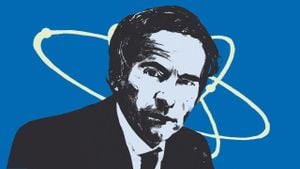Post-election economic trends are shaping the future of the U.S. as various sectors respond to the outcome of the recent midterm elections. Analysts are closely watching how economic indicators are fluctuated under changing political leadership and perspectives.
Traditionally, midterm elections have resulted in shifts within Congress, often affecting economic policies. The latest results have left many investors and business leaders pondering the next steps for their operations. With some sectors anticipating changes, others are bracing for continuity as both major parties navigate their post-election strategies.
The economy, as it stands, is resilient. Job growth has remained strong, with the unemployment rate hovering near historically low levels. But how long this can sustain itself is the million-dollar question. Recent reports indicate concerns over inflation and interest rate hikes, which have been significant topics both during and after the elections. Consumers and businesses alike are feeling the pinch from rising prices, which have been fueled by supply chain disruptions and increased demand.
Consumer spending, which is the backbone of the U.S. economy, is showing signs of slowing down as many households tighten their belts. The Federal Reserve’s moves to combat inflation by raising interest rates may be cooling off what has been a sizzling economy. Higher borrowing costs can discourage both individual consumers and businesses from making significant purchases.
Another layer to this economic puzzle is the uncertainty surrounding fiscal policy. With the recent election results shifting control of Congress, different factions within the government have divergent views on spending. Some advocate for increased investments aimed at economic stimulus, whereas others promote austerity, emphasizing deficit reduction. This tug-of-war could lead to complex negotiations as they attempt to strike deals on budget allocations.
Technology and green energy sectors are particularly on the radar. Many see the potential for substantial growth, especially if the government maintains or ramps up investments here. The enactment of new policies focusing on sustainable practices is becoming increasingly favorable, attracting investments and creating jobs. Leaders from these industries have expressed optimism about their prospects but remain cautious about political maneuvering impacting their funding.
Meanwhile, Wall Street has had its fair share of ups and downs since the voting took place. Investors reacted initially with volatility, unsure how the results might ripple outwards. Some sectors, particularly those reliant on consumer confidence, saw dips, but sectors like defense and infrastructure experienced surges, highlighting where future spending might focus.
It’s also important to mention how this political climate impacts international trade. Fluctuations resulting from these elections might change the long-term trade agreements or tariffs currently influencing certain import and export activities. US policymakers will have significant decisions to make, which could affect everything from agricultural exports to technology imports.
With all these factors combined, economists are working hard to gauge what the next few months will look like. Anticipation around the outcomes of key economic indicators like GDP growth and consumer confidence is rising. Surveys of consumer sentiment reflect nervousness about the economy, as many households worry about rising costs and whether their incomes can keep pace.
Looking internationally, observers are also interested to see how these domestic developments might play out globally. Other countries are watching the U.S. closely, and shifts toward protectionism, or openness will have ramifications worldwide. Trade partners will need to adapt quickly to any new policies as they evolve.
It’s also not just businesses keeping tabs. Workers are feeling the effects as discussions around the minimum wage, job protections, and labor rights come back to the forefront. Advocacy groups are pushing for reforms, aiming for stronger voices and protections for workers, especially as economic conditions change.
All eyes will remain glued to Washington, D.C. as both sides of Congress work to chart the economic future of the United States. The coming months will likely reveal whether the latest economic trends will revert back to normal, continue climbing, or hit unforeseen obstacles along the way.
Password protected investment strategies, technological innovations, and political negotiations are all culminating at once, leaving stakeholders from various sectors juggling several priorities at once. One thing is sure: the effects of recent elections will be felt far beyond the ballots cast, shaping both our financial institutions and our everyday lives.
Many Americans are hoping for stability and growth after this turbulent election year, eager to see how these shifts will crystallize as new leadership takes shape. What remains to be seen is whether collective economic sentiment can withstand the pressures of shifting political landscapes and economic uncertainties.



